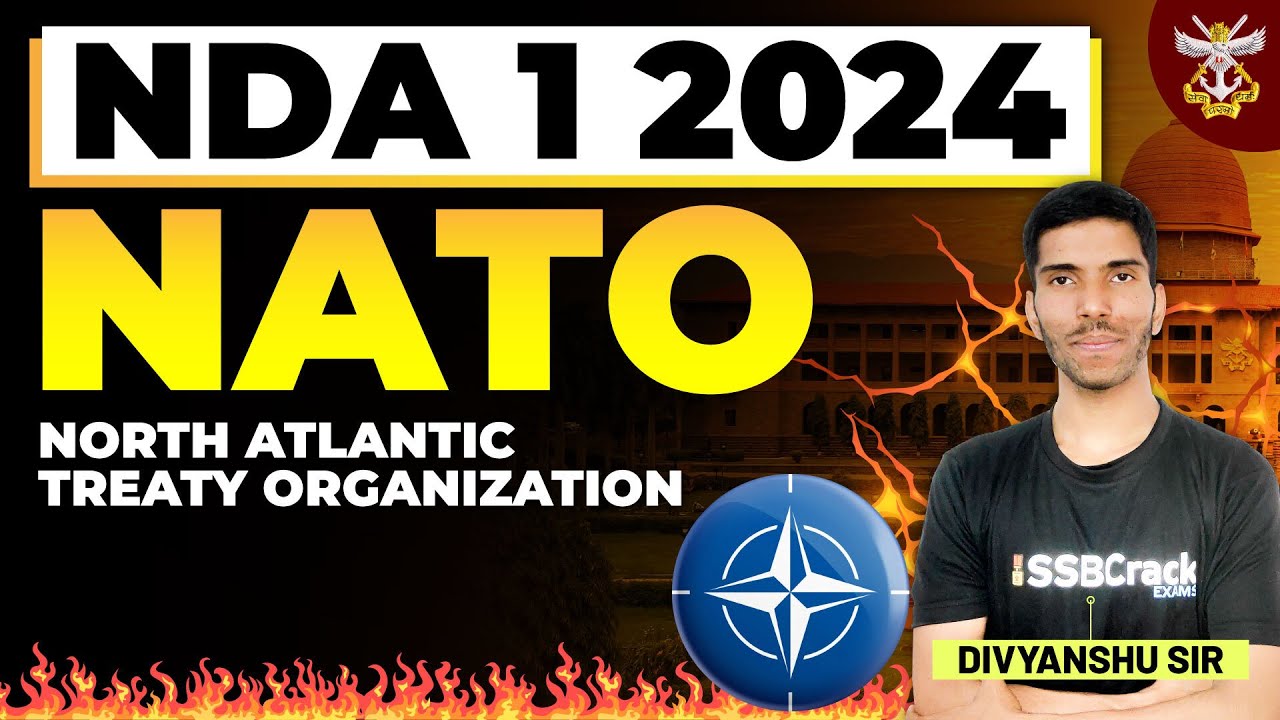The North Atlantic Treaty Organization (NATO) stands as a cornerstone of international security, promoting collective defense, cooperation, and stability among its member states. This article delves into the history, objectives, structure, and significance of NATO in the contemporary global security landscape.
NDA 1 2024 North Atlantic Treaty Organization (NATO) Lecture
History of NATO: NATO was founded in 1949 in response to the emerging Cold War dynamics, with the primary goal of deterring Soviet aggression and ensuring the security of its member states. The signing of the North Atlantic Treaty marked a commitment to mutual defense and cooperation among North American and European nations.
Objectives of NATO:
- Collective Defense: The core principle of NATO is collective defense, wherein an attack on one member is considered an attack on all, invoking Article 5 of the NATO Treaty.
- Crisis Management: NATO engages in crisis management and conflict prevention efforts, including peacekeeping operations, crisis response, and humanitarian assistance.
- Cooperative Security: NATO fosters cooperation and partnerships with non-member countries and international organizations to address common security challenges.
- Deterrence: The alliance maintains a credible deterrence posture, deterring potential adversaries and promoting stability in the Euro-Atlantic region.
- Capacity Building: NATO supports the development of military capabilities and interoperability among member states to enhance defense capabilities and readiness.
Structure of NATO: NATO’s organizational structure includes the North Atlantic Council (NAC), the highest decision-making body composed of ambassadors from member states; the Military Committee, responsible for military advice and coordination; and various civilian and military bodies focused on specific areas such as intelligence, logistics, and operations.
Significance of NATO:
- Transatlantic Solidarity: NATO strengthens the bond between North America and Europe, fostering transatlantic solidarity and cooperation on security and defense issues.
- Deterrence and Defense: The alliance plays a crucial role in deterring aggression and defending member states against potential threats, contributing to regional and global stability.
- Crisis Response and Conflict Management: NATO’s rapid response capabilities and crisis management mechanisms enable effective responses to emerging security challenges, including terrorism, cyber threats, and hybrid warfare.
- Political Forum: NATO serves as a political forum for dialogue, consultation, and consensus-building among member states, promoting diplomatic solutions to international crises and conflicts.
- Adaptability and Resilience: NATO continuously adapts to evolving security threats and geopolitical dynamics, enhancing its resilience and effectiveness in safeguarding member states’ security interests.
Conclusion: NATO remains a vital alliance for ensuring collective security, promoting stability, and upholding democratic values in an increasingly complex security environment. Through its commitment to collective defense, crisis management, and transatlantic cooperation, NATO continues to play a pivotal role in safeguarding peace and security across the Euro-Atlantic region.




















